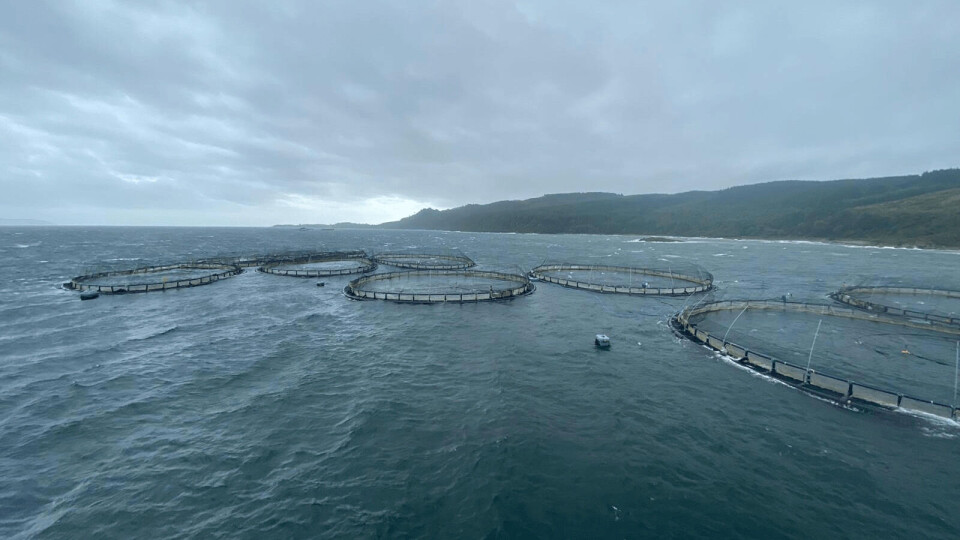
Carradale escape: At least 3,000 Mowi fish reached rivers, says report
Almost 300 salmon caught by anglers following the escape of 48,834 fish from Mowi Scotland’s Carradale North farm in October were identified as farmed fish after examination of their scales.
And Fisheries Management Scotland (FMS), which represents the country’s district salmon fishery boards, believes that at least 10 times that number of escaped fish made it into west coast rivers, it said in a report released yesterday.
It will now run a Mowi-funded long-term genetic monitoring programme alongside Marine Scotland Science (MMS) to determine whether any impact on the genetic integrity of wild salmon occurred due to interbreeding with the farmed salmon. The escaped fish were not sexually mature but there is potential for any that survive the winter to interbreed.

Scale samples
FMS and local fisheries boards and trusts asked anglers to report any suspected farmed fish they hooked following the Carradale North escape, which occurred when Mowi’s farm in Kilbrannan Sound broke free from its moorings during Storm Ellen.
Anglers were given guidance on how to distinguish farmed and wild salmon and were asked to provide location of capture, weight, and a photo of suspected farmed fish.
They were also asked to send in scale samples which were dried and examined, or “read”, under magnification. Farmed salmon have very uniform, close-together ridges, or circuli, on their scales reflecting a relatively constant growth. The circuli are different on wild salmon scales, as their growth will vary with the season and whether in marine or fresh water.
446 reported suspects
There were 466 reports of suspected farmed salmon caught by anglers. Of these, 310 had complete records (description, photo, scale samples), 29 had a photo only and 127 had only descriptive information.
Ayshire Rivers Trust carried out the work of reading the scales, most of which were re-analysed “blind” by MMS, without the classification assigned by the Trust.
Of the 310 suspected farmed salmon classified using scales by the Trust, 295 (95.2%) were confirmed as farmed fish and 15 (4.8%) as wild.
MMS classified 285 salmon using scales, of which 277 (97.2%) were confirmed as farmed salmon and eight (2.8%) as wild.
The highest number of scale-identified farmed salmon were found in the River Leven (118), where 194 suspected farmed salmon caught. The River Stinchar had 51 scale-identified farmed salmon, the River Doon had 41 (55 overall) and the River Girvan had 38 (61).
“The results presented here demonstrate that escaped farmed salmon originating from the Kilbrannan Sound rapidly dispersed and appeared in many rivers across the west of Scotland and north west England,” said FMS in its report.
“Fisheries Management Scotland received reports of escaped farmed salmon from 22 rivers. Escaped farmed salmon were verified through scale reading as definitely entering 17 rivers, but the analysis demonstrates that visual identification of farmed salmon by anglers was highly accurate (95-97%). The results demonstrate the speed and high level of dispersal with which the farmed salmon entered fresh water. The first capture was nine days after the event.”
FMS said the techniques deployed in the study cannot guarantee that all the salmon caught originated from Carradale North.
“However, given the timing of the captures and that the farmed salmon were all a similar size to those reported by Mowi, we are confident that the majority did come from this specific escape,” it added.
Reported figures are the minimum
FMS stressed that salmon caught as part of the study were not captured with the purpose of trying to remove escaped salmon, and that understanding the geographic spread of the escapees therefore relied on accurate records from anglers.
It had received a number of anecdotal records of farmed salmon being captured, but not reported. For example, there were anecdotal records of multiple farmed salmon having been caught in the Clyde region, but only one record was available.
“On that basis, the figures reported here should be considered to be the minimum number of farmed salmon captured,” said FMS.
It added: “Whilst there is variation in the catch efficiency of anglers both geographically and throughout the angling season, it is generally accepted that anglers catch in order of 10% of the wild salmon entering Scotland’s rivers.
“If a capture efficiency of 10% is applied, we can predict that a minimum of 3,000 farmed salmon entered Scottish rivers.”
Mowi ‘open and transparent’
The report concluded: “It is clearly in the best interest of both the farmed and wild salmon sectors to ensure that escapes do not occur. This principle was recognised and agreed within the Salmon Interactions Working Group.
“We welcome the open and transparent communications from Mowi surrounding the escape incident and their subsequent proactive engagement and cooperation in the monitoring phase.
“There have been other escape incidents in Scotland since the Carradale North event which have demonstrated the need for a more consistent and strategic approach to managing escapes and a need for more effective communications with wild fisheries managers. Fisheries Management Scotland continues to work collaboratively with the finfish farming sector with the aim of reducing and ultimately eliminating escapes.”























































